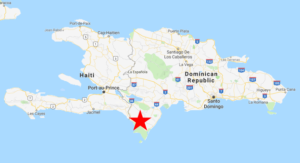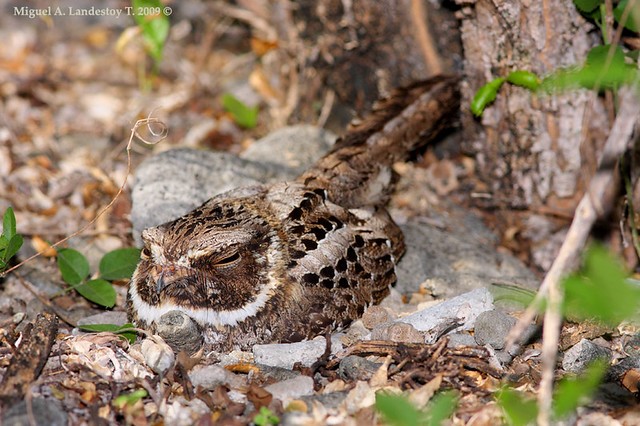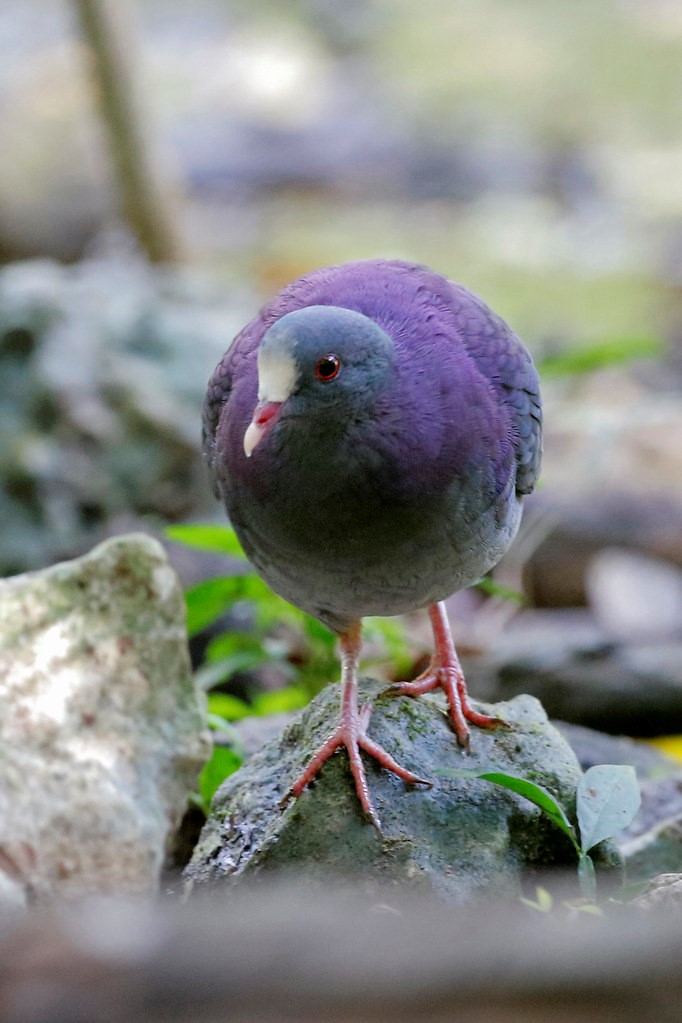Rabo de Gato Trail, Dominican Republic

The Rabo de Gato Trail is a remarkably productive path through a small patch of streamside woodland tucked into a valley in the parched northern foothills of the Sierra de Bahoruco. For reasons that are not self-evident, an eclectic mixture of montane and lowland endemics can be found at this compact, accessible site within walking distance of the rustic ecolodge Villa Barrancolí. Species that are easy to miss on a trip to the D.R. but can often be found here include White-fronted Quail-Dove, Least Pauraque, Flat-billed Vireo, White-necked Crow, and Hispaniolan Oriole.
Orientation
Directions
Rabo de Gato is on the outskirts of Puerto Escondido, a small dusty town about an hour’s drive (65 km) from Barahona or four hours (250 km) from Santo Domingo.
From Barahona. Follow Route 44 northwest into the farmland for about 1 km, then turn west on Route 46 (signposted for Cabral) and drive approximately 50 km into Duvergé. Upon entering the town, you will see a gas station on your left. At the fifth intersection after the gas station, turn left on Avenida Nuestra Señora del Carmen, which is the road to Puerto Escondido and Sierra de Bahoruco National Park. Soon after leaving Duvergé, the pavement ends and the dusty gravel road winds up through arid foothills, arriving at the village of Puerto Escondido after 11 km.
As you enter Puerto Escondido, the Sierra de Bahoruco National Park main office is the second building on the right. If the office is open when you arrive, it is a good idea to stop and pay the nominal fee to purchase a ticket to enter the park.
To reach both Villa Barrancolí and the Rabo de Gato Trail, continue four blocks past the park office to the T-junction and turn left. Proceed about 500 m and turn right, immediately crossing a bridge over a canal. After the bridge, turn right at the fork and drive 700 m, passing the fenced compound of Villa Barrancolí on your left. The road dead-ends at the Rabo de Gato Trail parking area.

Least Pauraque at Rabo de Gato. © Miguel A. Landestoy T.
Attractions
Many foreign visitors use Villa Barrancolí as a base camp for exploring the upper elevations of the Sierra de Bahoruco at Zapotén. In the opposite direction, it is a short drive to the southern shore of Lago Enriquillo—at 150 feet below sea level, the lowest and hottest place in the West Indies—and its searing skirt of desertscrub.
Birdfinding
The Rabo de Gato Trail begins as dirt road uphill through dry forest, then descends as a walking trail through gallery forest, first beside a small pond and stream, then over another low hill and down into the tallest part of the forest.
The second gallery forest segment has been dubbed “Quail-Dove Alley,” as all three possible species (White-fronted, Key West, and Ruddy) can often be found here—sometimes all at the same time. The endangered endemic White-fronted may actually be the commonest, or at least the most observable, of the three.
After the second patch of gallery forest, the trail continues into more dry forest, emerging onto a dirt road with fields on the right and dry forest on the left. A short distance farther, a track leads back into the dry forest, then follows the valley for several miles up into the Sierra de Bahoruco.
The trail appears to be located in a “Goldilocks” zone that supports species associated with both lowlands and highlands as well as both arid and humid habitats. It is good for most of the Hispaniolan endemics and many Caribbean specialties, including: Scaly-naped and Plain Pigeons, Bay-breasted Cuckoo, Hispaniolan Lizard-Cuckoo, Broad-billed and Narrow-billed Todies, all of Hispaniola’s hummingbirds, Antillean Piculet, Hispaniolan Woodpecker, Hispaniolan Parrot, Jamaican and Hipaniolan Parakeets, Hispaniolan Pewee, Stolid Flycatcher, Flat-billed and Black-whiskered Vireos, White-necked Crow, Eastern Red-legged Thrush, Antillean Siskin, Hispaniolan Euphonia, Hispaniolan Oriole, Black-crowned Palm-Tanager, Green-tailed Warbler, and Greater Antillean Bullfinch.

“Quail-Dove Alley” on the Rabo de Gato Trail is possibly the best place in the world to see the rare and beautiful White-fronted Quail-Dove. © Dax M. Román E.
A stroll through nearby farmland and along the Las Damas Canal and River should produce some additional species. In particular, Hispaniolan Oriole is often found in the tall trees beside the canal.
After dark, the grounds of Villa Barrancolí often have a Least Pauraque that can be taped into view, or may feed on insects drawn to the lights.
Services
Accommodations
Most foreign birdwatchers prefer to stay at Villa Barrancolí, owned by Kate Wallace and also known as Kate’s Camp, which has accommodations for 12 guests: six cabins with two beds each. There is a bath house with hot showers and an open dining area, where the manager’s wife will serve lunch or dinner upon request (whereas breakfast is assumed). Kate also owns and operates Tody Tours, facilitating ecotourism throughout the D.R., with a particular focus on endemic birds. In addition to organizing and conducting tours, Kate can connect independent travelers with local guides—a particularly important service for visits to Zapotén Road. She can be reached at katetody@gmail.com.
Alternative accommodations nearby consist of a hostel in Puerto Escondido (from the park office, turn west off the main road, and the hostel will be the third house on the right) and two hotels in Duvergé: Hotel La Casona (“The Big House”; at the intersection of Route 46 and Avenida N.S. del Carmen) and Hotel Argentina (one block north of the same intersection, beside the church on Calle La Canela).
Food
Dining options are scarce in Puerto Escondido. Like most small towns in the D.R., it has a one or two bars that keep cold drinks and snacks on hand.
For anything that resembles a restaurant or grocery store, the nearest establishments are in Duvergé.
Notes
When to Visit
As with other forested sites in the D.R., the best time to visit is approximately February through May, when the endemics are most vocal and conspicuous, but the Rabo de Gato Trail can be interesting at any time of year.